Our role in spider conservation
As the UK’s only body devoted exclusively to the study of arachnids, and as a charity with no commercial or political interests, the BAS is able to provide impartial, balanced information, and expert advice on the ecology and biology of British spiders, harvestmen and pseudoscorpions. With the increasing threats to all invertebrates, including arachnids, we are actively involved in scientific aspects of arachnid conservation. Our information and advice inform policy and decision makers in Government and the NGOs as well as conservation practitioners and the public.
The Society’s Conservation Officer (a volunteer post) chairs our conservation sub-committee, which provides support and expert advice on all matters relating to arachnid conservation. The committee works closely with other national and local conservation organisations, and develops and implements conservation policy and action on behalf of the Society. It is involved in the assessment of species statuses through the national Biodiversity Framework (formerly the Biological Action Planning (BAP) process) and the Red Listing processes and is developing volunteer research programmes to underpin Action Plans for the conservation of many of our rarest species. This work, together with the wealth of data on the distribution and status of Britain’s spiders held on the Spider Recording Scheme (SRS) database, enables us to provide authoritative advice on the conservation and protection of threatened species. Increasingly, it also contributes to our understanding of how best to manage a wide range of habitats to promote spider biodiversity.
The BAS is an entirely volunteer organisation – our surveys and research, and the collation, analysis and interpretation of data that underpin arachnid conservation in the UK, all result from the dedication, hard work and expertise of our members. Click here to find out more about how you can support this work.
Our rarest species
Numerous designations of conservation and rarity status have been produced in recent years. These include statutory lists giving comprehensive or partial protection to species on a British or devolved nation basis, national and international Red Lists assessing extinction risk, an Amber List assessing the rate of decline of species not yet regarded as threatened, and lists of nationally rare and scarce species. Although, unsurprisingly, there is considerable overlap between the lists the differences between them are also substantial depending on the criteria, including the amount of subjective judgement, used for assessment. The application of different designations to spiders in Britain is explained below, and the designations that apply to individual spider species are summarised here. A summary of designations covering a much wider range of species groups is published by JNCC.
It should always be borne in mind that the reliability of these designations can only reflect the quantity and quality of the data on which they are based. For spiders in Britain, they are based on the around 1.2 million records in our national Spider Recording Scheme database. Although this is a very rich resource and a huge tribute to the many, mostly amateur, arachnologists who contribute data, many areas of Britain remain under-recorded and many spider species are very difficult to detect. The BAS is committed to continuing to support and develop spider recording to deliver increasingly effective and reliable assessment of distribution, population trends and conservation status.
Species protected by Law
Only two British spiders are fully protected by law. Schedule 5 of the Wildlife and Countryside Act 1981 (as amended) for England and Wales, and the Nature Conservation (Scotland) Act 2004, give full protection to the Fen Raft Spider Dolomedes plantarius and the Ladybird Spider Eresus sandaliatus. This means that neither they nor their habitat can be harmed or disturbed in any way, although there are provisions for conservation, conservation science and education to be carried out under licence.
A much lower level of legal protection is given to lists of Priority Species (or Species of Principal Importance) defined in separate legislation in England, Scotland and Wales. This legislation imposes a duty on statutory authorities and government at all levels, to have regard for biodiversity; the priority species lists are intended to guide them in this task. The Priority Species lists, which are reviewed on a five-yearly basis, are, respectively part of Section 42 of the Natural Environment and Rural Communities (NERC) Act (2006) in England, the Scottish Biodiversity List defined by the Nature Conservation Act (Scotland) 2004, and Section 7 of the Environment (Wales) Act 2016. Prior to devolution, most of the species on these lists were on the national Biodiversity Action Plan (BAP) list drawn up in Britain to comply with the 1992 Convention on Biological Diversity.
In general, European spiders are very badly served by international legislation and no British spider species receives any international protection.
The Global Red List
The International Union for Conservation of Nature (IUCN), established in 1964, compiles a global Red List of Threatened Species, which has become internationally recognised as the world’s most comprehensive information source on the global conservation status of animals, fungi and plants. It provides information about range, population size, habitat, ecology and threats, which helps inform conservation decisions.
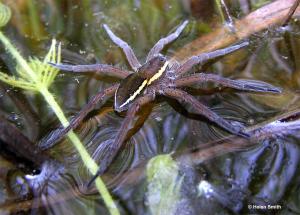
Increasingly, the Red List provides a measure of the health of the world’s biodiversity, providing the information needed to underpin and catalyze both biodiversity conservation action and the policy changes that are critical to protecting natural resources.
Only two British spider species are currently on the global Red List: Nothophantes horridus the Horrid Ground Weaver Spider and Dolomedes plantarius the Fen Raft Spider. Nothophantes horridus is listed because it is currently thought to be the only spider species endemic to Britain and is known from a small number of sites within a very restricted geographical area. It was last assessed in 2015 when it was considered to be Critically Endangered. Dolomedes plantarius was listed as Vulnerable in 1996 on the basis of its highly fragmented and declining population (visit dolomedes.org.uk for information on this species in Britain). However, changes in the assessment methods since then mean that a re-assessment is needed.
The BAS has no direct role in spider conservation outside Britian but it is committed to supporting international conservation work for arachnids. Our position on commercial exploitation of wild-caught arachnids can be read here.
The British Red List of spiders
The most recent British Red List of spiders was authored by British Arachnological Society experts (Harvey et al. 2017), using data from the Spider Recording Scheme. It formed part of a ‘species status review’ series published by the UK’s statutory nature conservation agencies, and adopted procedures recommended by the IUCN for the regional application of the IUCN threat assessment guidelines.
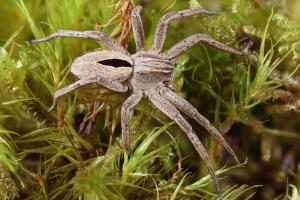
The Red List assigns a level of threat to most spiders on the British list – only recent colonists for which breeding populations are not established, or which are synanthropic and well outside their natural range, are excluded. The majority of species are assessed as being of Least Concern (LC). ‘Threatened’ taxa are identified as being at risk of extinction using a set of criteria that reflect varying degrees of threat and include measures of range, decline and population size. They are classified as Critically Endangered (CR), Endangered (EN) or Vulnerable. Species for which the evidence strongly suggests that they have been lost from Britain for over 50 years prior to the assessment are considered Regionally Extinct (RE). The Critically Endangered category can additionally be qualified as Possibly Extinct (CR(PE)) when it is thought likely that a species has been lost.
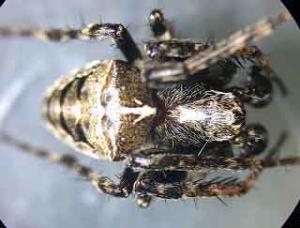
Some species that are close to qualifying for Threatened categories are assigned Threatened (NT) status. A small number of species for which the available data and knowledge are considered insufficient to make any informed judgement on their status are categorized as Data Deficient (DD).
The proportion of the extant native British spider fauna assigned to one of the three main threat categories (CR 18 species, EN 30 species and VU 54 species) in the 2017 review is almost 16%. Including Near Threatened (29 species) this rises to 20%, or one fifth, of our spider fauna. Three species on the British list were considered to be extinct: Dipoena coracina, Gibbaranea bituberculata and Mastigusa arietina.
Conservation and threat statuses were first applied to British spiders in the early 1980s as part of the Nature Conservancy Council’s Invertebrate Site Register project. The first published account of threatened British spiders was included in the British Red Data Book (Merrett, P. in Bratton 1991). The Red Data Book used rather different criteria from the 2017 Red List and classified 22 species as Endangered, 31 as Vulnerable, 26 as Rare.
The Amber List
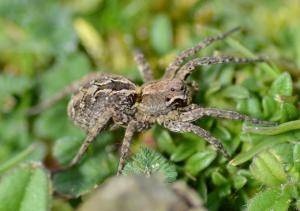
For the first time in 2017 the British Arachnological Society published an Amber List of 43 spider species that had undergone substantial decline but remained relatively common (Harvey et al. 2017). The list represents a more pro-active approach to species conservation than the current Red List – prevention rather than cure. It highlights the potential for these species to qualifying for threat status if current trends continue, and the need for a ‘watching brief’ with targeted research and surveys.
National Rarity Status
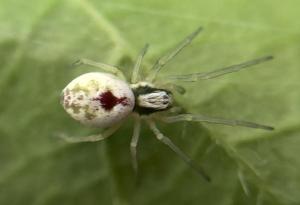
This designation is unique to Britain and assigns species to Nationally Scare (NS) and Nationally Rare (NR) categories based on restricted distributions rather than on conservation priority and extinction risk (Harvey et al. 2017). Most Nationally Scarce (NS) species are found in between 16 and 100 10 km Ordnance Survey national grid squares (hectads).
Nationally Rare species are found in fewer than 16 squares. This designation allows some scope for expert judgement, taking account of recording effort, of whether or not records are thought to represent breeding populations, and of cases where rapid changes in abundance are in progress. In the latter case, for example, recent colonists that are clearly expanding their range rapidly may not be given a designation.
The Nationally Scarce category is directly equivalent to the combined Nationally Notable A (Na) and Nationally Notable B (Nb) categories used in earlier assessments of various taxonomic groups.
References
Bratton J.H. (ed.) 1991. British Red Data Book 3. Invertebrates other than Insects. Joint Nature Conservation Committee, Peterborough.
Harvey, P., Davidson, M., Dawson, I., Fowles, A., Hitchcock, G., Lee, P., Merrett, P., Russell-Smith, A. & Smith, H. 2017 A review of the scarce and threatened spiders (Araneae) of Great Britain, Species Status No. 22, Natural Resources Wales, Cardiff. To download the review, click here.
